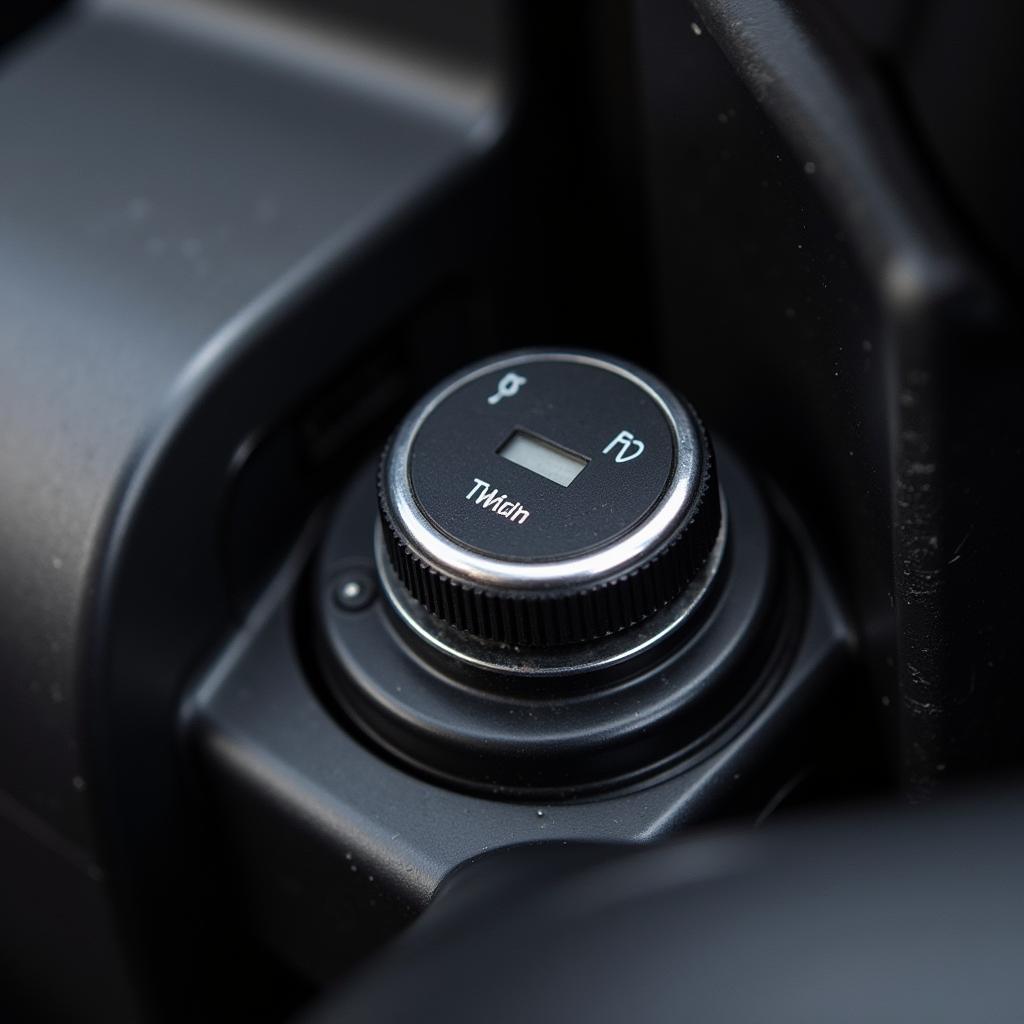Knowing how to check if your car battery is dead is essential for any driver. A dead battery can leave you stranded and frustrated, but with a few simple steps, you can quickly diagnose the problem and get back on the road. This comprehensive guide will walk you through the process of determining if your battery is the culprit and explore potential solutions to get you moving again.
Signs Your Car Battery is Dying
Before you grab your tools, pay attention to these telltale signs that suggest your battery might be nearing its end:
- Slow Engine Crank: If your engine takes longer than usual to turn over, it could signal a weak battery struggling to supply enough power.
- Dimming Lights and Electrical Issues: Notice your headlights are dimmer than usual, or interior lights flicker? This can indicate a drop in battery voltage.
- Dashboard Warning Light: Many modern cars have a dedicated battery warning light that illuminates when the battery needs attention.
- Clicking Sound When Turning the Key: A clicking sound without the engine cranking often means the battery doesn’t have enough juice to engage the starter motor.
- Old Battery Age: Car batteries have a limited lifespan, typically around 3-5 years. If yours is approaching this age, it might be time for a replacement.
How to Check if Your Car Battery is Dead
Now, let’s dive into the practical steps to confirm whether your battery is truly dead:
1. Visual Inspection
- Check for Corrosion: Examine the battery terminals for a white, powdery substance (corrosion). Corrosion can disrupt the electrical connection between the battery and your car’s electrical system.
- Inspect the Battery Case: Look for any cracks, bulges, or leaks in the battery case. Physical damage can indicate a failing battery that needs immediate replacement.
2. Test the Battery Voltage
Using a multimeter, a handy tool available at most auto parts stores, you can easily check your battery’s voltage:
- Set the Multimeter: Set your multimeter to measure DC voltage (usually denoted by a “V” with a straight line above it) within the range of 20 volts.
- Connect the Probes: Connect the red probe to the positive (+) battery terminal and the black probe to the negative (-) terminal.
- Read the Voltage: A fully charged battery should read around 12.6 volts. If the reading is below 12.4 volts, your battery is likely discharged and needs charging. A reading below 12 volts often indicates a dead battery that may need replacing.
3. Jump Start Your Car
If the battery appears to be the issue, attempt a jump start using jumper cables and a working battery from another vehicle or a portable jump starter. If your car starts with a jump, it confirms the battery was the problem.
Important Note: Jump-starting a car involves working with electrical currents and should be done cautiously. If you’re unsure, it’s best to seek assistance from a qualified mechanic or roadside assistance.
What to Do if Your Battery is Dead
- Recharge the Battery: If the battery is simply discharged, try recharging it using a battery charger. Follow the manufacturer’s instructions carefully.
- Replace the Battery: If the battery is old, damaged, or fails to hold a charge after recharging, it’s time for a new one. Consult your car’s owner’s manual or a trusted mechanic for the correct battery specifications.
- Check for Underlying Issues: Sometimes, a dead battery is a symptom of a deeper electrical problem, such as a faulty alternator or parasitic drain. If your battery keeps dying prematurely, have your car inspected by a qualified mechanic to diagnose and address any potential issues.
Maintaining Your Car Battery for Optimal Performance
Prolong the life of your car battery and avoid unexpected breakdowns by following these maintenance tips:
- Clean Battery Terminals Regularly: Use a wire brush and a baking soda and water solution to clean any corrosion from the battery terminals.
- Keep the Battery Secure: Ensure the battery is securely fastened in its tray to prevent vibrations that can shorten its lifespan.
- Limit Short Trips: Frequent short trips prevent the alternator from fully recharging the battery. If possible, combine errands into longer drives.
- Turn Off All Accessories When the Engine is Off: Avoid draining the battery by ensuring headlights, interior lights, and other accessories are switched off when the engine is not running.
By understanding how to check if your car battery is dead and following these maintenance tips, you can stay one step ahead and keep your car running smoothly for miles to come.
For more insights on car battery health, check out our articles on signs your car battery is failing and car battery indicator meaning.
FAQs
1. How long does it take to charge a dead car battery?
Charging time varies depending on the battery size and charger output. It can take anywhere from a few hours to a full day.
2. Can I jump start my car with a dead battery from another car?
Yes, but ensure the other car has a battery with the same voltage (typically 12 volts). Connect the jumper cables correctly to avoid damage.
3. How often should I replace my car battery?
Car batteries typically last 3-5 years. Factors like climate and driving habits can affect lifespan. It’s best to have your battery tested regularly and replaced as needed.
4. What causes a car battery to drain quickly?
Common causes include leaving lights or accessories on, a faulty alternator, extreme temperatures, or a parasitic drain (electrical components drawing power even when the car is off).
5. Can a dead battery damage my car?
While a dead battery itself won’t damage your car, attempting to jump-start it incorrectly or driving with a severely depleted battery can potentially harm electrical components.

